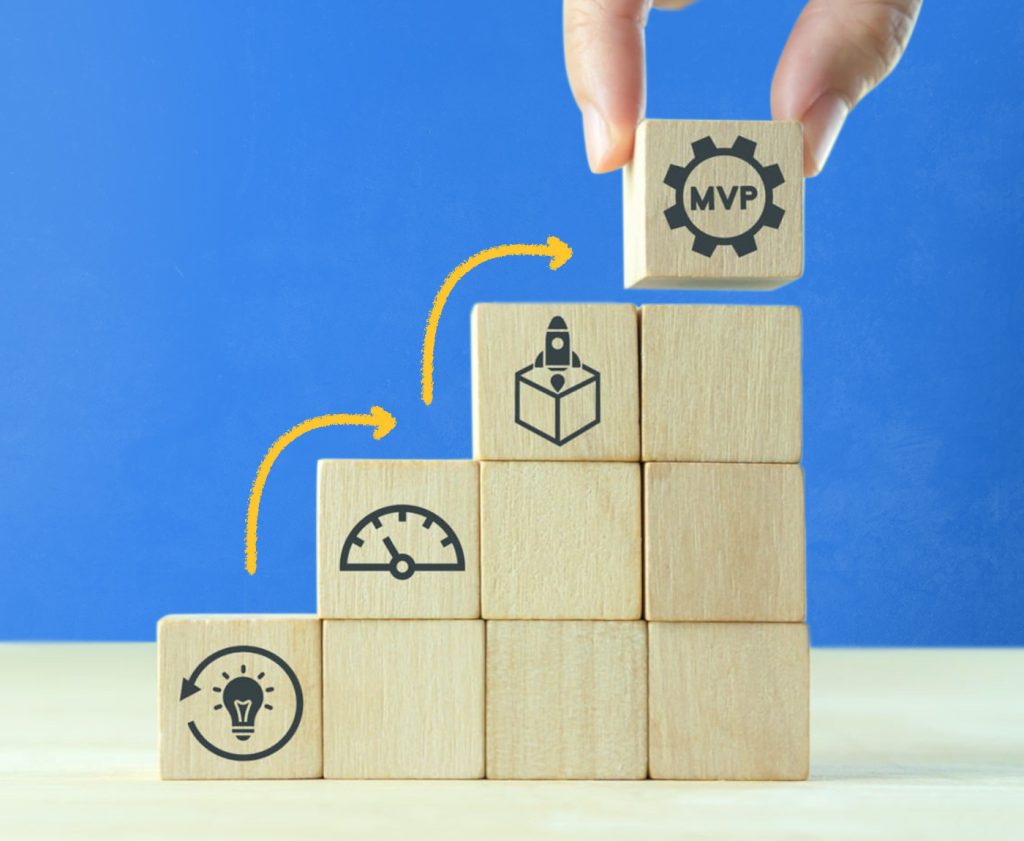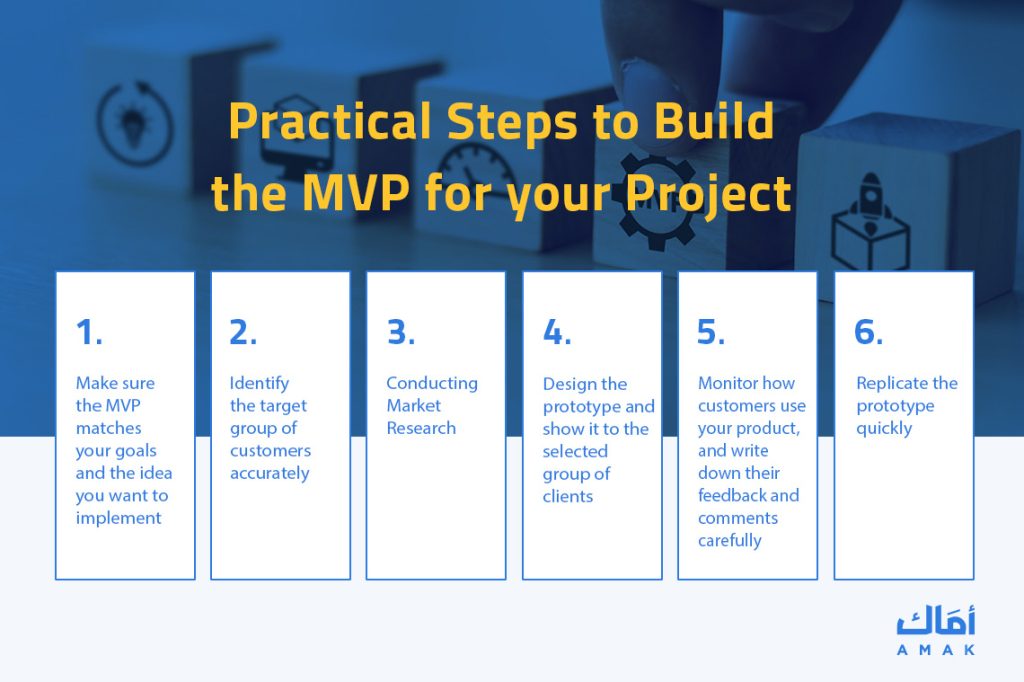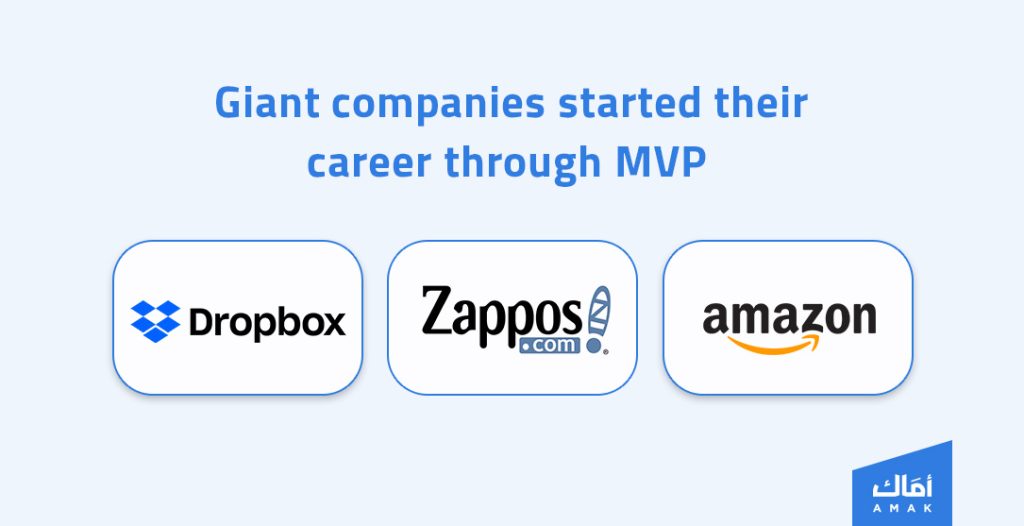
All entrepreneurs go through the stage where they want to turn their ideas into reality. Still, most of them fall victim to this stage as they try to translate their ideas into the best possible form of products or services they want to provide to customers, which makes the costs of launching their products very high. In addition, many ideas fail because they are assumptions that may not be true for customers.
You can overcome all these obstacles through the MVP concept, which we will discuss in this article, in addition to its benefits, how it works, and how it can be employed in the entrepreneurship sector and startups.
The MVP Definition
MVP is an acronym for (Minimum Viable Product), which means the initial salable version or the simplified model of the product or service we want to provide customers. This model offers the highest level of value that we want to provide for a selected group of customers.
Many researchers and those interested in entrepreneurship have considered the concept of MVP. Still, the godfather of this concept is “Eric Reis,” the author of (The Lean Startup), as he dealt with it in his book with great interest and considered it the most important means that enables the entrepreneur to learn and develop his idea with the least possible effort, depending on the target customers.
Objectives and Purposes of MVP
The main objective of establishing and launching the MVP is market testing, which means ascertaining that the market needs this product and that customers can buy it. Although this approach benefits all companies, including companies already in the market and considering launching a new product, the most significant benefit of the MVP is for entrepreneurs considering launching their startups based on specific assumptions they are still determining.
So the primary purpose of the MVP is to test the idea and determine whether it is helpful to be developed into a suitable product for the market, modify it, or even abandon it altogether and search for a new idea.

Expected Benefits of MVP
- Testing the idea with real users with minimal resources.
- Reducing the costs of launching a startup to the lowest possible level helps speed up work and reduces potential losses.
- Saving time and effort required to develop an integrated product, and reducing the massive waste, especially in failure cases.
- Enhancing the capabilities of the entrepreneur in construction and thinking.
- Forming a base on which other products or services can be built.
- Building the brand as quickly as possible.
Practical Steps to Build the MVP for your Project
The life cycle of startups begins with the birth of an idea that constitutes an innovative solution to a problem that exists in a specific category of customers in society, then comes the next step, which is building the MVP that expresses this idea directly and ensures that it reaches the target customers ultimately. Hence, it is necessary to follow some crucial steps while making the MVP, and these steps are summarized as follows:

1- Make sure the MVP matches your goals and the idea you want to implement
Your initial product must focus on the value you want to provide to your customers because its primary goal is to ascertain if the idea you are trying to implement is suitable for customers and whether they need it. Therefore, ensure that your initial product fully expresses your idea and do not waste your efforts in including any additional benefits.
2- Identify the target group of customers accurately
At this stage, you need a specific group of customers who are in urgent need of your product that they are willing to accept an incomplete product to be able to solve their problem.
Consequently, This group of customers must be chosen very carefully to succeed in testing your initial product. These customers are either the first adopters of your product and services or the first to reject them, and the following stages will ultimately depend on their opinions and feedback. These customers are supposed to share similar characteristics such as age, work sector, place of residence, or distinctive features such as a specific sport or a particular disease.
3- Conducting Market Research
Market research includes looking at statistics for similar products and accurately analyzing competitors and identifying customer needs. Still, conducting personal interviews with target customers is one of the essential things in market research related to building the MVP, as the preparation stage for creating the initial product requires listening carefully to the target customers’ opinions, understanding their requirements, and making sure of their purchase motives.
These are the most critical points that must be considered during personal interviews:
- Talk less, listen more: Instead of talking about your idea and the product you will present in the future, try to listen to what customers think about the problem because this helps you understand their needs more accurately.
- Try to find out more details about your users, their lives, and their work: Some details seem marginal, but they can be significant during the development of the prototype because the customer is the cornerstone of your product, not what you think about it.
- Make all your questions and inquiries about the past, not the future: Focus on the problems they have experienced rather than asking them what solutions they would like to have.
- Do not directly ask them if they will buy the product when you launch it and try to find out their reactions to the relevant competitors’ products.
The customer interview should help you find answers to the following questions:
- How important is my solution to them?
- Is the problem the product will solve essential to these users?
- If customers buy my product, can they repurchase it?
4- Design the prototype and show it to the selected group of clients
In this step, you need to move from the idea to actual implementation by designing the product prototype that users will deal with in the experimental phase. Of course, this design varies according to your product; it may be a website, mobile application or something else. Still, it is essential for the procedure to be simple and to avoid high costs.
For example, if your product is a website, use some tools that offer simple website building at minimal cost instead of hiring a programmer and web designer.
5- Monitor how customers use your product and write down their feedback and comments carefully
This step is the most important and sensitive among the previous ones, in which you must stay close to customers and listen to their comments and observations about the initial product. You have to meet customers directly and listen to their opinions about the product, its suitability for their needs, the simplicity of its design, and ease of use. Finally, focus heavily on the customers’ suggestions and modifications that they would like to have in the product.
6- Replicate the prototype quickly
After completing the previous steps, you must redisplay the prototype to customers with appropriate modifications based on customer feedback each time you offer the product to them.
This step is vital in reaching the final suitable form of the product on which your work will be based. It is also essential to observe and avoid boredom, as this is the only way you can be sure that your idea is successful.
Does the funding phase precede the MVP construction phase?
To get financing for your idea, you need to prove its success to investors, which can only be proven through experience. This experience is the essence of the MVP; at the same time, building the initial product needs some costs, so how can you get out of this loop?
The life cycle of startups goes through several stages, including financing and MVP. Still, there is a stage that precedes the initial product development stage, the pre-initial financing stage, known as the Pre-Seed Fund, the minimum initial funding phase. Financing the construction of the MVP at this stage is done through personal savings and contributions from family and friends, which is the most appropriate method for that.
Although not all entrepreneurial projects are technical, technical tools now provide innovative solutions that help build the MVP at low costs and in a short time. That helps speed up the workflow, test ideas, and search for investors and funding sources if successful.
Giant companies started their career through MVP

1- Amazon
Despite the vast size of Amazon company today, its founder “Jeff Bezos” started his work through the MVP. In the early 1990s, his idea was an online bookshop, then gradually tested the possibility of selling other products until he reached the largest e-commerce site worldwide.
2- Dropbox
Dropbox had the idea of storing and synchronizing files online. Hence, the company’s owners designed a simple video of no more than 3 minutes to explain the concept and the advantages offered by this solution. As a result, the video was widely accepted and increased the number of people willing to buy the service so that the company could be well-established in this sector.
3- Zappos
The founder of Zappos had an idea about selling shoes online, and to test the idea’s success, he used the MVP model. He went to some shoe stores and took pictures of the shoes they had, then put them up for sale on a website. He also delivered them himself. After ensuring the idea worked, he launched his online shoe-selling service. His site became the most extensive online shoe-selling site before Amazon acquired it.
In conclusion, the MVP can save a lot of time, effort, and money, which resolves the debate about whether the idea is successful and minimizes losses if any occur. So it is a safe way for entrepreneurs to test their assumptions and accelerate the launch of their companies. If you have an idea and want to develop an MVP for it, you can contact us to receive support from our experts; To create your product through the latest and most effective tools available.